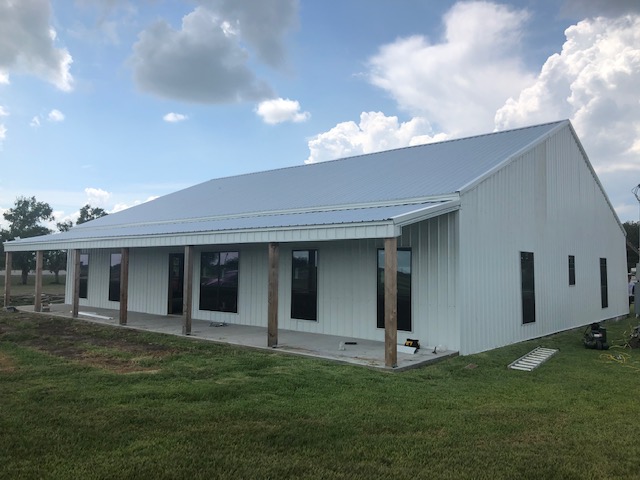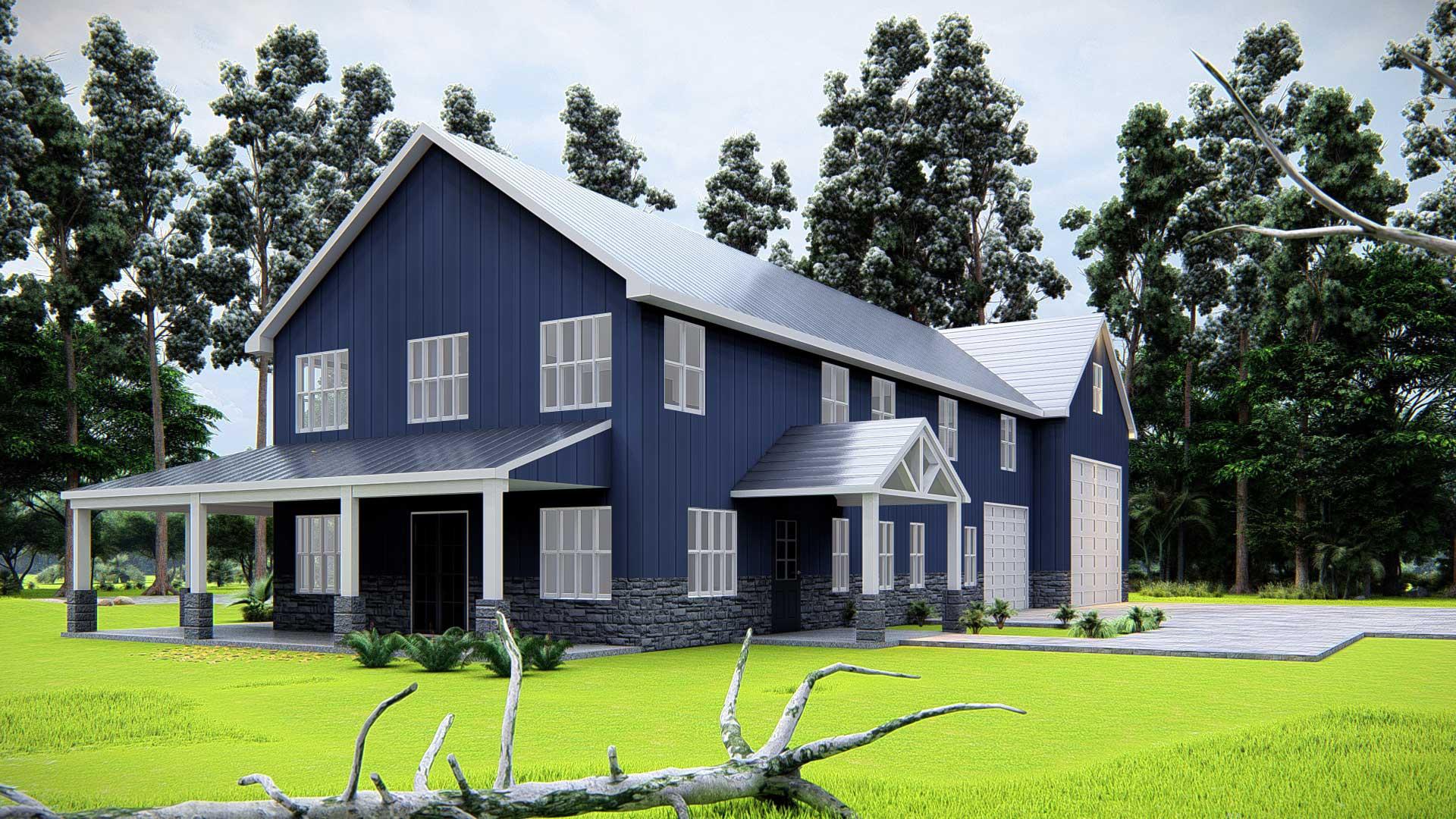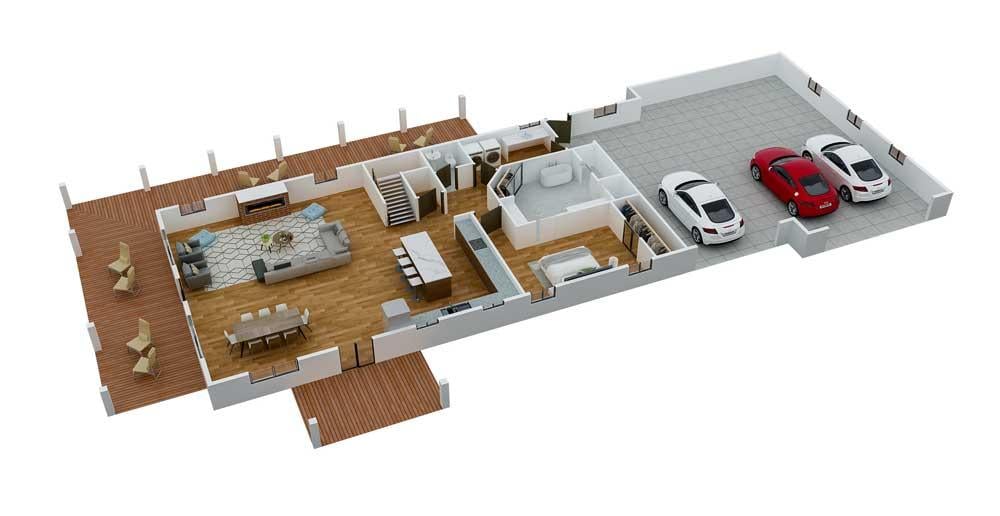
Down payment requirements for financing a barndominium
Welcome to our comprehensive guide on barndominiums! In this article, we will provide you with an overview of what a barndominium is, its benefits and drawbacks, and the various designs available. Additionally, we will discuss financing options, down payment requirements, savings strategies, and other key factors to consider when planning your barndominium construction project. Dive into this article to better understand and navigate the world of barndominiums, from concept to completion. Happy reading!
Understanding Barndominiums
A barndominium is a concept that is gaining popularity in today’s housing market. This article will provide an in-depth understanding of what a barndominium is, the benefits and drawbacks of living in one, and the common types and designs available.
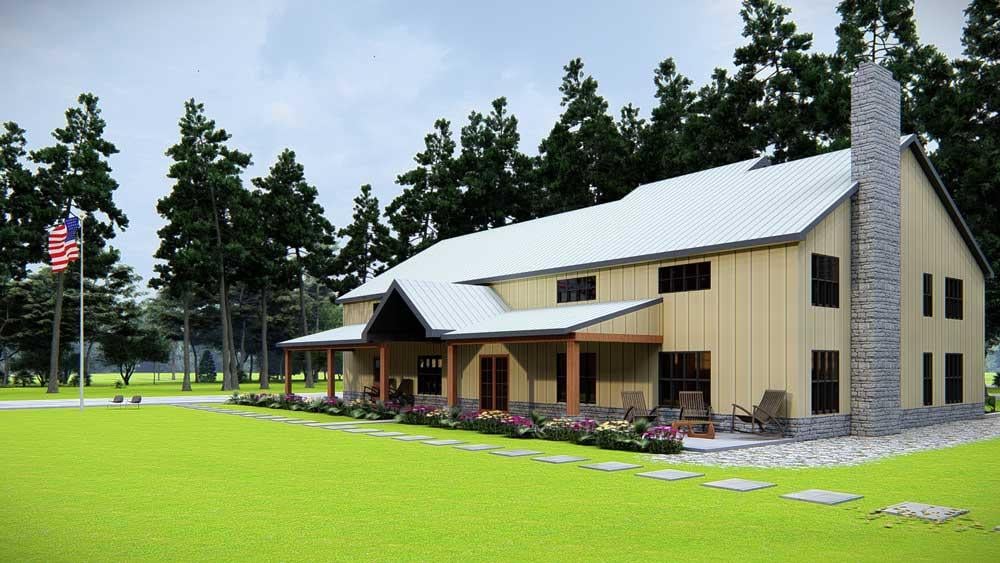
Definition of a Barndominium
A barndominium is a type of residential building that combines living quarters with a barn, workshop, or storage space. It is a fusion of the words “barn” and “condominium.” The design is usually characterized by a metal exterior and open-concept interiors with large, versatile spaces. Barndominiums initially began as a niche trend for people who wanted flexible accommodations that enabled them to live and work on their properties. However, today, the term extends to include several unique and hybrid architectural styles that merge traditional residential features with commercial or agricultural elements.
Barndominiums are particularly popular in rural areas, where many homeowners need large storage spaces and workshops for farming or ranch operations. Still, there has been a growing interest in these structures in suburban and urban areas, as people find them a cost-effective alternative to traditional housing.
Benefits and Drawbacks
There are several reasons why someone might consider living in a barndominium. Some benefits include:
- Affordability: Constructing a barndominium is typically less expensive than building a traditional home. The materials used, such as metal siding and framing, are often more affordable than traditional construction materials like brick and wood. Also, the incorporation of both living quarters and working/storage spaces into a single structure can save on costs.
- Customization: Barndominiums offer a high level of customization, enabling homeowners to design their living spaces according to their unique needs.
- Easy maintenance: The use of metal materials makes barndominiums relatively low maintenance. Metal exteriors do not require paint or siding and are resistant to rot, termites, and fire.
- Energy efficiency: The metal exterior can be insulated for better energy efficiency, and the open-concept design often allows for passive cooling during hot seasons, reducing the need for air conditioning.
- Durability: Metal structures are known to last longer than wood, making barndominiums a more durable option.
Common Types and Designs
There are numerous types and designs of barndominiums available, ranging from small single-story dwellings to spacious multi-story structures. Some common types include:
- Single-story barndominium: These are the most basic and affordable options, with a single floor for both living and working spaces. The layout can be open-concept or partitioned into separate rooms.
- Multi-story barndominium: A larger, multi-story option offers increased living space and opportunities for customization. The ground floor typically houses work or storage areas, while the upper levels contain the living quarters.
- Loft barndominium: Incorporating a loft into the design can provide additional living or recreational space. The loft can also function as a master bedroom or office.
- L-shaped barndominium: An L-shaped design separates the living and working spaces into two wings, providing more privacy for the living quarters.
- Garage apartment: This type of barndominium incorporates an apartment or living space above a large garage or workshop, maximizing available living space and providing separation between the two areas.
When it comes to design, barndominiums are highly customizable. Homeowners can choose from various floor plans, exterior finishes, and interior styles to create their dream home from 600 sq ft to 3000 sq ft barndominiums. Whether they prefer a modern aesthetic or a more rustic, farmhouse-inspired look. Ultimately, deciding to build or live in a barndominium depends on personal preferences, needs, and budget, making it a flexible and unique housing option.
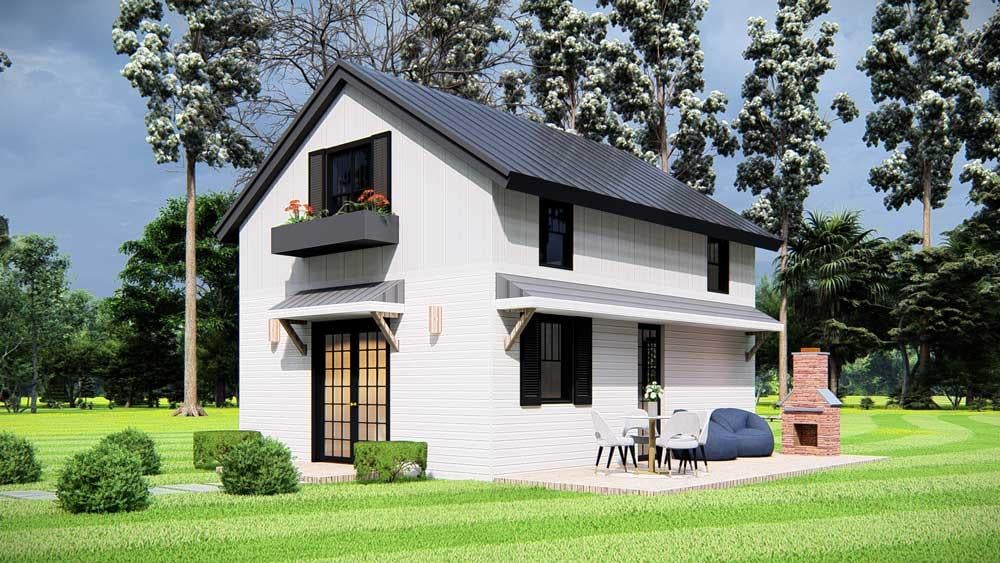
Barndominium Construction and Financing
Barndominiums blend a barn and a condominium, providing a unique living experience for homeowners. These hybrid structures mix the functionality of a barn with the comfort and style of a modern home. As barndominiums gain popularity, potential homeowners may be curious about the financing options available for these unique structures. This article will discuss the various financing options, loan eligibility requirements, and interest rates for barndominiums.
Traditional vs. Barndominium Financing
Traditional financing refers to the process of obtaining a mortgage loan to purchase a home, which usually requires a down payment, competitive credit scores, and a steady income. On the other hand, barndominium financing has more variables involved due to the nature of the construction process.
Barndominiums can be built from scratch or converted from existing barns. The construction process and materials used for a barndominium can be quite different compared to traditional home construction, which can pose challenges in securing financing. Lenders may be hesitant to provide loans for non-traditional home construction projects due to the perceived risk associated with these projects. Consequently, financing a barndominium may require a higher down payment and a more thorough loan approval process.
Financing Options
There are various options available for financing a barndominium, which include construction loans, mortgages, and personal loans. Each financial product has its unique features and benefits.
Construction Loans
Construction loans are short-term loans that provide funds for the building process. These loans are usually interest-only and applicable for the construction period. Once construction is complete, borrowers must secure a separate mortgage to pay off the construction loan or convert it into a long-term mortgage.
Construction loans are typically available for barndominiums since the funds are specifically meant for construction projects. However, securing a construction loan for a barndominium construction might be more challenging compared to traditional construction projects due to the unconventional nature of barndominiums.
Mortgages
Mortgages are long-term loans that are secured by real property. Borrowers can obtain a mortgage to finance the purchase of a completed barndominium or refinance a construction loan. The mortgage approval process for barndominiums can be stricter compared to traditional homes, often requiring higher down payments and more extensive documentation.
Securing a mortgage for a barndominium may require working with a lender specializing in non-traditional home loans or searching for a portfolio lender who is willing to take on the risk of financing such projects. An alternative solution is to seek the USDA Rural Development or FHA 203k rehab loan programs as some of these programs can be applicable to barndominium construction or purchase.
Personal Loans
Personal loans offer an alternative financing option for barndominium projects. While they typically carry higher interest rates than construction loans or mortgages, personal loans have the benefit of being unsecured, meaning that the borrower’s property is not at risk should they default on the loan.
The downside of personal loans is that they usually have lower loan limits; thus, they might not cover all the expenses of constructing a barndominium.
Loan Eligibility
When applying for a loan to finance a barndominium, lenders will consider several factors to determine the borrower’s eligibility.
Credit Score and History
A borrower’s credit score and history play a significant role in determining loan eligibility. Lenders will consider a borrower with a high credit score more creditworthy than those with lower scores. Additionally, having a history of responsible credit usage increases a borrower’s chances of loan approval.
Income and Employment
A steady income and employment history are essential factors in determining loan eligibility. Lenders want to ensure that borrowers have the ability to make the monthly loan payments. Providing proof of stable income and employment history can strengthen a borrower’s loan application.
Debt-to-Income (DTI) Ratio
The debt-to-income ratio (DTI) is a measure of a borrower’s monthly debt obligations compared to their monthly income. Lenders want to ensure that borrowers can afford the new loan without overburdening their financial situation. A low DTI ratio increases the chances of loan approval.
Interest Rates and Loan Terms
Interest rates and loan terms for barndominium financing vary based on the borrower’s creditworthiness, the type of loan, the lender, and prevailing market conditions. Typically, construction loans carry higher interest rates than mortgages. Personal loans may also have higher rates compared to other financing options due to their unsecured nature.
Loan terms depend on the type of loan. Construction loans are usually short-term, lasting the duration of the building process (approximately 12 to 18 months). Mortgages, on the other hand, can have terms ranging from 15 to 30 years.
In summary, financing a barndominium involves understanding the different financing options available, assessing your eligibility based on credit score, income, and DTI ratio, and navigating interest rates and loan terms. By considering these factors, borrowers can successfully secure financing for their barndominium projects.
Down Payment Requirements for Barndominiums
Minimum Down Payment
Barndominiums, which are growing in popularity, are homes carved out of, or built to look like, a barn. The down payment requirements for these unique homes are based on the type of loan option chosen, such as conventional loans, Federal Housing Administration (FHA) loans, Veterans Administration (VA) loans, or Rural Housing Service (RHS) loans.
Conventional Loans
Conventional loans are offered by private lenders and usually have more stringent requirements than government-backed loans. For a barndominium, the minimum down payment for a conventional loan typically ranges from 5% to 20% of the purchase price. The exact amount depends on the lender’s policies and the borrower’s credit score, among other factors. A higher down payment may be required for larger loan amounts or if the barndominium is considered a non-conforming property due to its unique design.
Federal Housing Administration (FHA) Loans
FHA loans are government-insured mortgages designed for borrowers with lower credit scores and minimal down payment funds. The minimum down payment for FHA loans is 3.5% of the purchase price if the applicant has a credit score of 580 or higher. For borrowers with credit scores between 500 and 579, the minimum down payment increases to 10% of the purchase price. However, it’s essential to note that not all barndominiums will qualify for FHA loans; the property must meet specific FHA guidelines, which may vary depending on the local jurisdiction.
Veterans Administration (VA) Loans
VA loans are available to eligible veterans, active-duty service members, and their spouses. They are government-backed loans that require no down payment, making them an attractive option for those who qualify. However, not all barndominiums will be eligible for a VA loan, as these loans require the property to meet specific VA guidelines regarding construction, safety, and valuation. It’s crucial to work with a lender experienced in VA loans for barndominiums to ensure your property meets the necessary criteria.
Rural Housing Service (RHS) Loans
RHS loans, also known as USDA loans, are designed to promote homeownership in rural areas. These loans have no down payment requirement and are available to borrowers with modest incomes. As with FHA and VA loans, not all barndominiums will qualify for an RHS loan. The property must meet specific guidelines set forth by the Rural Housing Service, which can vary depending on the location.
Down Payment Assistance Programs
In addition to the various loan options, down payment assistance programs can help potential barndominium buyers who need extra financial support.
Federal and State Programs
Several government programs offer down payment assistance to eligible borrowers, such as first-time homebuyers or those with low to moderate incomes. These programs may provide grants or low-interest loans to help cover the down payment and closing costs of purchasing a barndominium. The eligibility requirements, guidelines, and assistance amounts vary by program and state, so it’s essential to research and apply for any available programs in your area.
Non-Profit Organizations
Many non-profit organizations also offer down payment assistance programs to qualified homebuyers. These programs may provide financial support in the form of grants, interest-free loans, or other aid, depending on the organization and its guidelines. It’s vital to research local and national non-profit organizations to identify any relevant assistance programs and understand their requirements and application processes.
Factors Affecting Down Payment Requirements
Several factors can influence the down payment requirements for a barndominium, including:
Loan Type and Lender Policies
Different loan types and individual lender policies can lead to differing down payment requirements for barndominiums. It’s important to research and compare various loan options and lender requirements to find the most suitable option based on your financial situation.
Credit Score
A higher credit score often results in lower down payment requirements, as the borrower is seen as less of a risk. Conversely, those with lower credit scores may face higher down payment requirements, even with government-backed loan options.
Property Location
The location of your barndominium can influence the down payment requirement, primarily if you are applying for a government-backed loan like an FHA, VA, or RHS loan. These loans have specific guidelines regarding the property’s location and construction, which may affect the amount you need to put down on the home. It’s essential to work closely with your lender and adhere to the guidelines set forth by the loan program you choose.
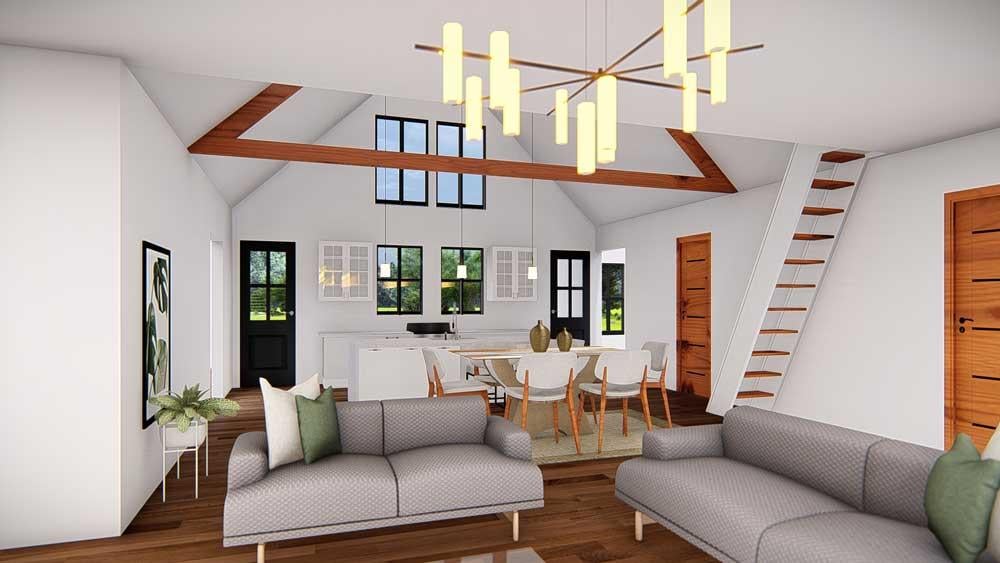
Saving for a Barndominium Down Payment
A barndominium is a unique and modern fusion of a barn and condominium, offering the benefits of both rural and urban living. Saving for a down payment on a barndominium can be a daunting task, but with some planning and determination, it is achievable. In this article, we will discuss creating a savings plan, tips for saving money, and options for meeting down payment requirements.
Creating a Savings Plan
The first step towards saving for a barndominium down payment is creating a realistic savings plan. Start by thoroughly researching the cost of barndominiums in your target area and determining how much you can afford. Once you know your target down payment amount, create a savings plan by following these steps:
- Set a goal: Establish a clear and specific goal for your down payment savings. This should include the required amount and the desired timeline to reach the goal.
- Track your expenses: Keep a detailed record of your monthly expenses, including housing, utilities, groceries, transportation, and recreational expenses. This helps you identify areas where you can cut back and allocate the money for your down payment.
- Make a budget: Develop a monthly budget that accounts for all of your expenses and ensures that you are saving money towards your down payment. Stick to your budget and revisit it regularly to adjust as needed.
- Allocate your savings: Determine the portion of your income that you can commit to saving for your down payment each month and make sure to prioritize it in your budget.
- Set up a separate savings account: Create a dedicated savings account for your barndominium down payment and deposit your savings directly into the account. This helps keep you organized and prevents you from dipping into your savings for other expenses.
Tips for Saving Money
Saving for a down payment requires discipline and commitment. Here are some tips to help you save money more effectively:
- Reduce discretionary spending: Reduce non-essential expenses such as dining out, vacations, and entertainment. This will free up more money for your down payment savings.
- Eliminate debt: If you have high-interest debt, such as credit card balances, prioritize paying them off first. This will reduce the amount of interest you are paying and increase your ability to save.
- Shop wisely: Be a smart shopper and compare prices for groceries, services, and other expenses. Look for sales, use coupons, and consider purchasing generic items if they offer similar quality at a lower price.
- Increase income: Look for ways to increase your income through a side job or freelance work. This could help you reach your savings goal faster.
- Automate your savings: Set up an automatic transfer from your checking account to your dedicated down payment savings account. This helps ensure that you are consistently saving money each month.
Options for Meeting Down Payment Requirements
While saving for a down payment, consider these options for meeting the down payment requirements:
- Gifting Funds: If you have family or friends who are willing to help, they could provide a monetary gift for your down payment. Be sure to document these gifts properly, as lenders will require proof of the source of the funds.
- Borrowing from Retirement Accounts: Sometimes, you can borrow money from your retirement account, such as a 401(k) or IRA, for a down payment. This option comes with potential risks, so consult with a financial advisor before making any decisions.
- Collateral and Seller Concessions: If you own other assets, such as real estate or investments, you could use them as collateral towards your down payment. Additionally, you may be able to negotiate seller concessions to help with your down payment.
In summary, saving for a barndominium down payment requires clear goals, budgeting, and discipline. By following these strategies and exploring other options for meeting down payment requirements, you can achieve your dream of owning a unique and modern barndominium.
Additional Considerations for Financing a Barndominium
While financing a barndominium may appear to be an exciting and unique project, there are additional factors to consider when undertaking this property type. This article will delve into several critical aspects, such as appraisals and valuations, land acquisition and site preparation, inspections and insurance requirements, and cost estimation and budgeting.
Understanding Appraisals and Valuations
One of the most significant factors to consider when financing a barndominium is its appraisal and valuation. These are essential components of the financing process, as lenders use them to determine the property’s value and assess the borrowing risk. Consequently, it directly influences the loan amount and interest rates offered.
Barndominiums are relatively unique property types, and appraisers may find it challenging to estimate their value. It could require finding comparable properties or relying on the cost approach, which involves determining the cost of building the barndominium from scratch. This method considers depreciation and land value to determine the final appraised value.
It is crucial to hire an experienced appraiser who understands barndominiums and can provide an accurate valuation. Additionally, landowners should research and provide comparable properties to the appraiser if possible. This information can help justify the loan amount and ensure that the lender’s offer reflects the barndominium’s true value.
Land Acquisition and Site Preparation
Another essential aspect of financing a barndominium is acquiring the land and preparing the site for construction. Land acquisition and site preparation can range from purchasing the land to clearing the ground, surveying, providing utilities, and creating road access. These steps can significantly impact the overall project cost and should be factored into the financing plan.
When searching for a suitable land parcel, consider its location, topography, accessibility, and proximity to utilities. A wise choice in the land acquisition stage can lead to savings in time and money during the construction process. Additionally, financing institutions may have specific requirements concerning the property’s location or zoning classification, so it’s vital to understand those requirements beforehand.
Site preparation costs can vary greatly depending on factors such as land conditions, the need for soil testing, obtaining permits, or even tree removal. Including these expenses in your planning and budget will help ensure a smoother, more predictable financing process.
Inspections and Insurance Requirements
Inspections and insurance requirements are other crucial factors to consider when financing a barndominium. Inspections are typically mandatory when obtaining financing, and lenders will want to ensure that the property adheres to all building codes, regulations, and standards. This process usually includes regular inspections of the construction progress by a licensed professional.
Moreover, obtaining loan approval may require specific insurance types, such as builder’s risk insurance, liability insurance, or property insurance. Ensure that you understand and meet these requirements before seeking financing. This step can save a considerable amount of time and energy, as well as prevent potential delays in the loan application process.
Cost Estimation and Budgeting
Lastly, creating an accurate cost estimate and budget is crucial when financing a barndominium. Barndominium costs can fluctuate depending on various factors such as size, materials, finishes, and optional features. Furthermore, it is vital to anticipate and account for potential unforeseen expenses.
To manage these variables, start by preparing a detailed breakdown of all anticipated costs, including the land price, site preparations, foundation and framing, utilities, interior finishes, and any additional features. A strong budget plan will serve as a roadmap to guide the construction process, helping ensure that the project stays on schedule and within cost limits.
It is also essential to include a contingency allowance in the budget to account for unexpected costs or changes. Communicate this budget with lenders to help expedite the loan application process, ensuring that you have enough funding to complete the project successfully.
In summary, careful research and planning, specifically relating to appraisals and valuations, land acquisition and site preparation, inspections and insurance requirements, and cost estimation and budgeting, will significantly impact the success of your barndominium financing journey. By addressing these aspects in advance, you increase your chances of achieving a smooth and successful barndominium building experience.
1. What constitutes a typical down payment percentage for purchasing a barndominium?
A typical down payment for a barndominium ranges from 10% to 20% of the total purchase price or construction cost, depending on the lending institution and individual financial circumstances (Safal, 2020).
2. Can barndominium down payments be financed through government-backed loans, such as USDA or FHA loans?
Yes, both USDA and FHA loans can be used to finance a barndominium down payment. However, eligibility depends on the property’s location and meeting specific construction requirements set by the respective loan programs (Turner & Van Zandt, 2020).
3. How does credit score impact the required down payment?
A higher credit score generally allows for lower down payment requirements, as it demonstrates lower risk to the lender. Conversely, a lower credit score might lead to higher down payment requirements or higher interest rates on the loan (Brown & Taylor, 2020).
4. Are there programs available to assist with down payment requirements for barndominium financing?
Yes, there are down payment assistance programs available, typically offered by state or local housing agencies. These programs may provide grants or low-interest loans to help with the down payment and closing costs (Consumer Financial Protection Bureau, 2019).
5. How can equity in existing property be used to lower down payment requirements?
If a buyer owns land or another property with equity, a lender may allow the use of that equity as collateral to lower the required down payment for a barndominium (FHA.com, 2020).
6. Does the down payment amount affect mortgage insurance requirements when financing a barndominium?
Yes, a larger down payment can eliminate or reduce the need for mortgage insurance premiums and lower the overall loan-to-value ratio, resulting in lower ongoing costs for the borrower (Nationwide Mortgage, 2020).
References:
Brown, A., & Taylor, J. (2020). Mortgage Credit Score Requirements. OnQ Financial.
Consumer Financial Protection Bureau. (2019). Down payment assistance programs. Retrieved from https://www.consumerfinance.gov/ask-cfpb/what-are-down-payment-assistance-programs-and-how-can-i-find-information-on-them-en-298/
FHA.com. (2020). Using Land Equity. Retrieved from https://www.fha.com/fha_article?id=213
Nationwide Mortgage. (2020). What is a Loan to Value (LTV) Ratio? Retrieved from https://www.nationwidemortgage.co.uk/glossary/loan-to-value-ltv-ratio/
Safal, P. (2020). Barndominium Financing: Secure Your New Barndo Home. Metal Building Homes.
Turner, E., & Van Zandt, A. (2020). FHA Loan Requirements. Nerdwallet. Retrieved from https://www.nerdwallet.com/article/mortgages/fha-loan-requirements

